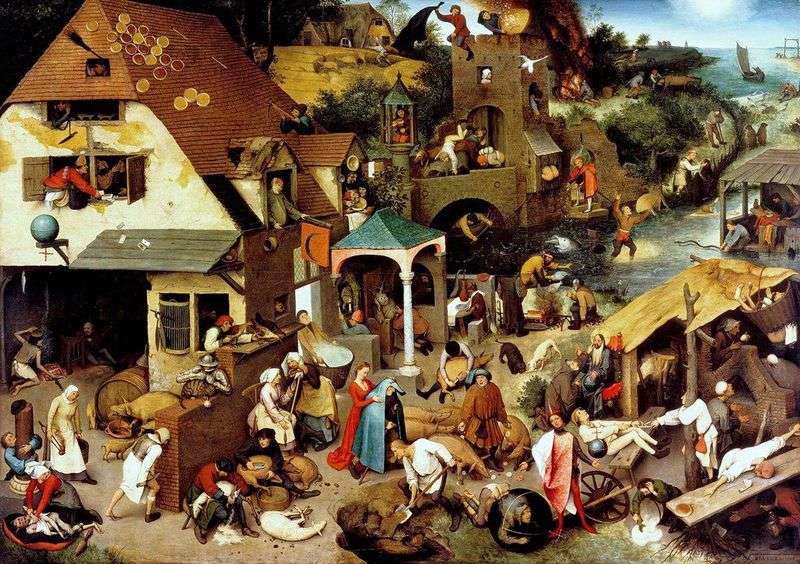
Painting “Flemish proverbs” or “Dutch proverbs.” Some of the techniques of Bosch painting – a large canvas size and small – figures, countless number of stories are characteristic of the early paintings of Brueghel, which represent pictures of parables on the themes of Flemish folklore. The picture with the image of the Dutch proverbs – “the encyclopedia of all human wisdom collected under the buffoon cap” – includes more than 100 scenes-metaphors, through which the popular wit ridiculed the vanity and stupidity of many human undertakings.
The great intellectual of the Northern Renaissance Erasmus of Rotterdam in 1500 published proverbs, as well as aphorisms from ancient philosophers in his first book, with this title – “Proverbs.” In 1564, Rabelais portrayed the Proverbial Island in Gargantua and Pantagruel. And between these dates, in 1559, a kind of proverbial village is created by the Dutch painter Peter Bruegel the Elder – Brueghel the Peasant.
This picture is called – “Dutch proverbs.” The canvas itself is small, 117 by 164 cm. And in such a small space the artist managed to place more than a hundred plots-miniatures! Let’s try on a small reproduction to consider at least some of the stories. At the top left – you see, on the shingles there are round cakes: the roof is covered with pies – “paradise of fools”! Below the ramp, the archer “shoots the second arrow to find the first one.” Part of the roof is devoid of tiles – “the roof has a crate.”
Below left is a man in a blue shirt – “biting columns.” Next to the lady straightened with a horned slender gentleman: “she can even tie the devil to the pillow.” Above this scene is a woman, carrying a bucket in one hand, in the other – a smoking head: “she has fire in one hand, in the other – water”. Below to the right – a person tries to gather a spoon with something like a spoon from a cauldron: “the one who spilled the porridge will not collect everything again.”
Center of composition confessing under the shadow: “he confesses to the devil.” In the same confessional, a man in a red cap “holds a candle for the devil.” Also in the center, even closer to the viewer – a woman in a red dress throws a blue cloak on her shoulders – “she deceives him.” To the left of this bright pair are two spinners: “one spinning yarn, the other spinning.” A man in a white shirt wields a shovel: “He buried the well after the calf had already drowned.”
To the right of this miniature is a man surrounded by pigs. Engaged in such a habitual business – violates the evangelical warning “do not throw pearls before swine.” Above, on the tower – a man “throws feathers down the wind.” His friend immediately “keeps his cloak in the wind.” In the window of the tower a woman – she “stare at the stork”. The boat in the upper right corner – in order to remind the proverb “it’s easy to swim in the wind.” A boat with a rower slightly lower – recalls the proverb “hard to swim against the current.”
The characters of the miniatures that make up the picture hang between heaven and earth; throw money into the water; they beat their heads against the wall; bite iron; they block the light themselves; sit down between two chairs or on hot coals; lead each other by the nose… Goldfinch in a pink cloak is spinning on the finger of the globe – “the world revolves on his thumb”! And at his feet – a ragamuffin on all fours trying to climb into a similar ball – “I have to bow down to succeed”. Pay attention – at the left edge of the picture we again see this very ball, only inverted: “the world is upside down.” And above this symbol of the globe hangs the ass of a character in a red shirt: “he celebrates the need for peace” … So, by the way, the composition of the whole picture is being built: individual miniatures are not connected mechanically,
Looking at the characters, guessing the cipher, suddenly you understand the meaning of this complex picture. It turns out that Bruegel in the “Dutch proverbs” – not at all a commonplace proverbial collector. And his work is not entertainment for a bored slacker. And edification. It’s easy to see that most of the proverbs, even those that are in my review, tend to be biased, they condemn stupid, immoral behavior. Here it becomes clear the meaning of the pairing in the picture of the globe – in a normal and inverted form. The world of the picture is an inverted world in which the terrible reality is that there should be no reality.
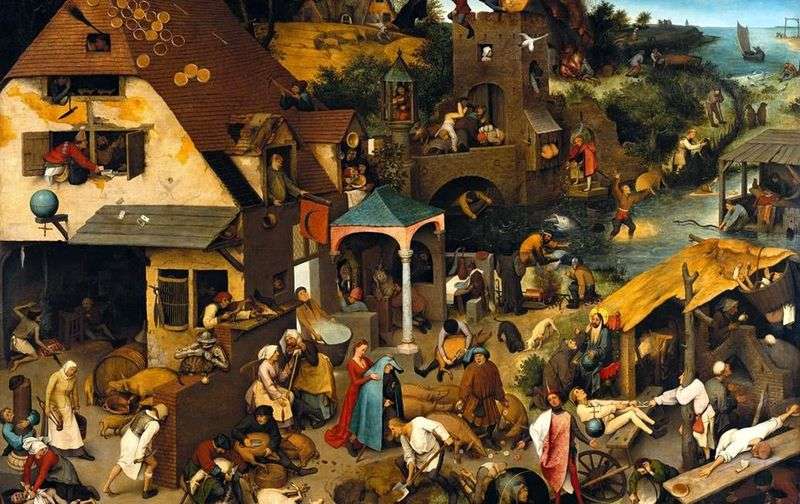 Dutch proverbs by Peter Brueghel
Dutch proverbs by Peter Brueghel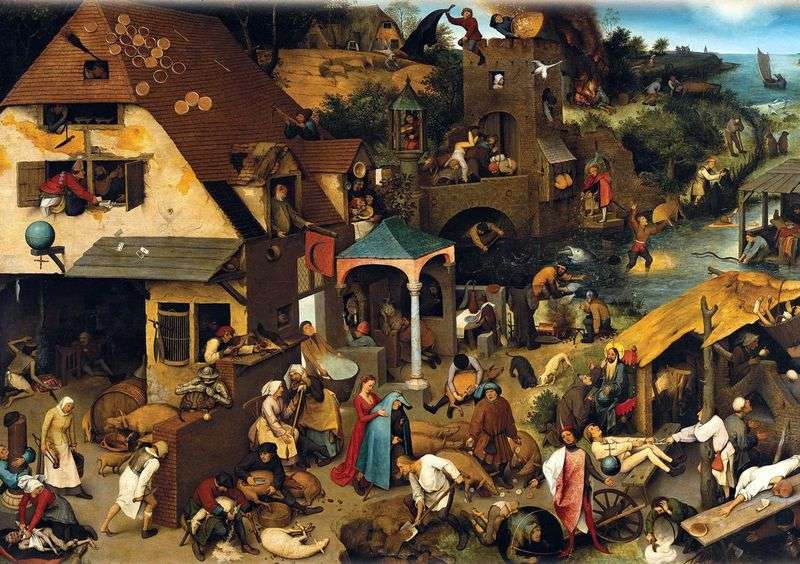 Proverbs (Blue Cloak) by Peter Brueghel
Proverbs (Blue Cloak) by Peter Brueghel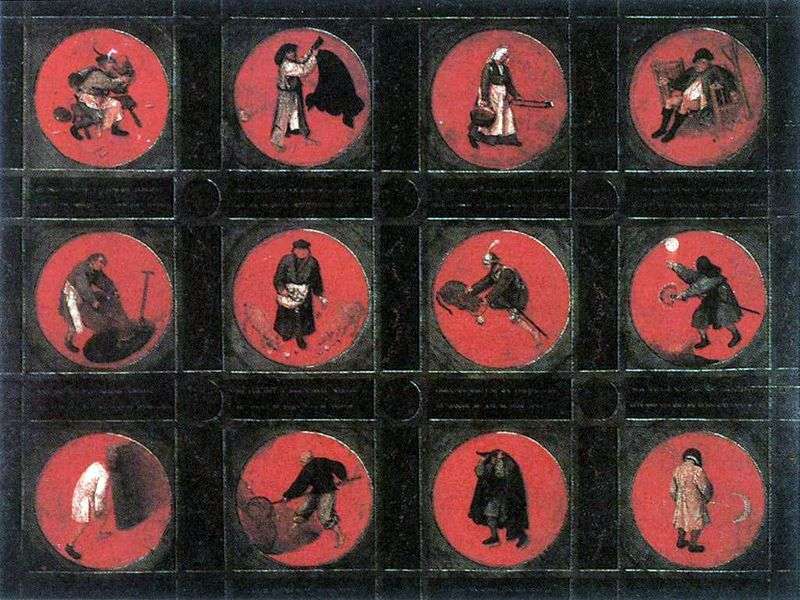 Twelve Proverbs by Peter Brueghel
Twelve Proverbs by Peter Brueghel Laziness by Peter Brueghel
Laziness by Peter Brueghel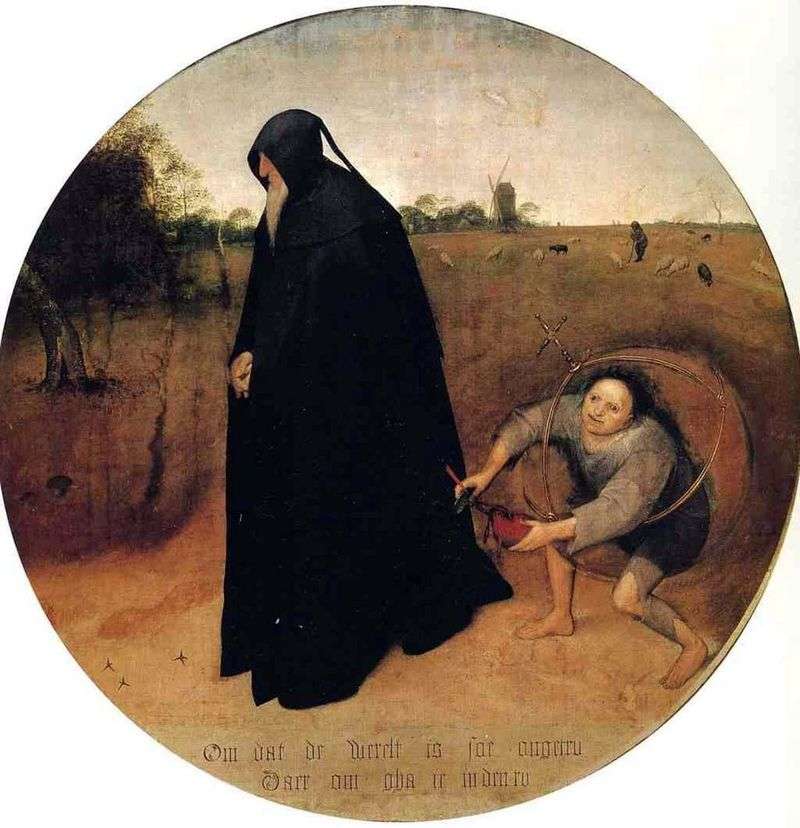 Misanthrope by Peter Brueghel
Misanthrope by Peter Brueghel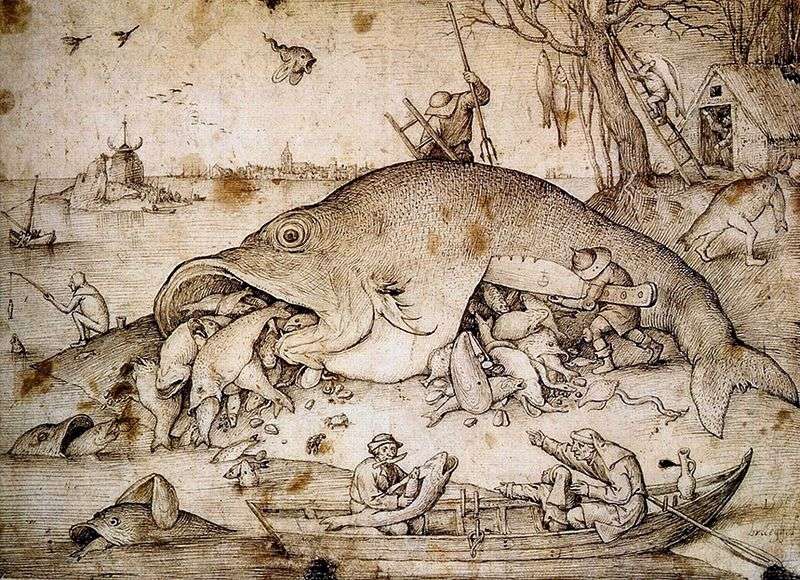 Big fish eat small by Peter Brueghel
Big fish eat small by Peter Brueghel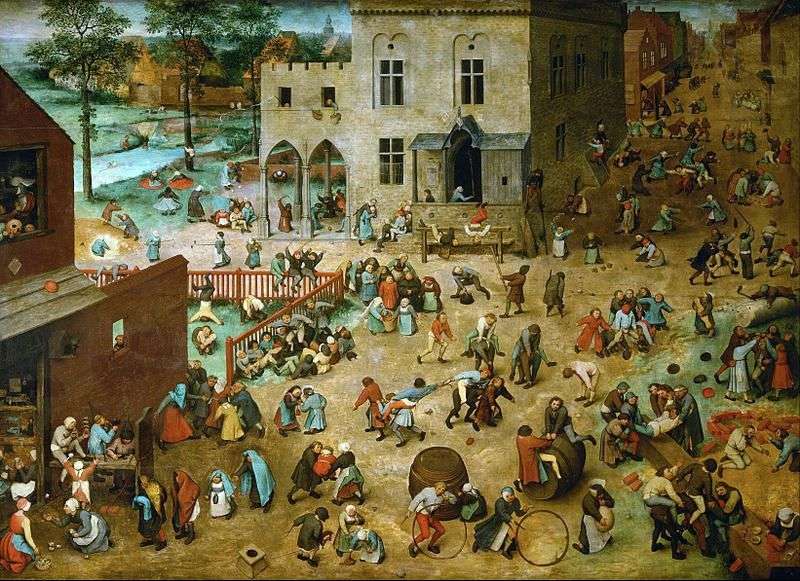 Kids Games by Peter Brueghel
Kids Games by Peter Brueghel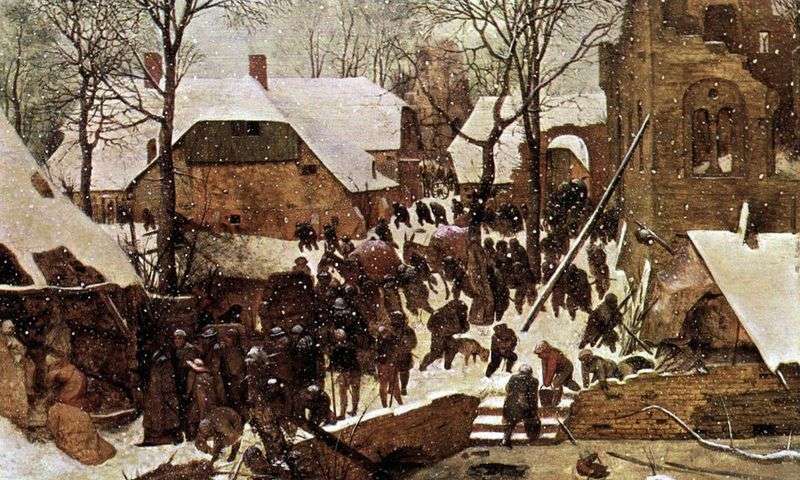 The Adoration of the Magi in the Winter Landscape by Peter Brueghel
The Adoration of the Magi in the Winter Landscape by Peter Brueghel